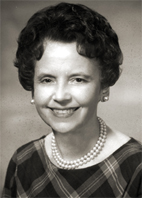Dolciani Mathematical Center, MAA
The Dolciani Mathematical Center is a three-building complex located at 1529 and 1527 Eighteenth Street, NW, in Washington DC. The Center is named in honor of Dr. Mary P. Dolciani - mathematician, educator, and author - who provided major funding for the purchase of these buildings in 1978.
Building 1: Edgar H. Vaughn Building. This building is the headquarters for the Mathematical Association of America. It is a five story townhouse designed by the noted Washington architectural firm of Hornblower and Marshall as a residence for J.A. Chisholm and completed in 1903. Hornblower and Marshall were known for their town homes and were famous for many Smithsonian designs. It has a winding staircase illuminated by a large skylight, five beautiful fireplaces, and much period architectural detail. The building was the home of The Honorable Charles Evans Hughes while he was Secretary of State, 1921-1925. Hughes later served as an Associate Justice, 1910-1916, and as Chief Justice, 1930-1941, of the U.S. Supreme Court. The building is named in honor of the grandfather of James Vaughn, President of the Vaughn Foundation, a major contributor to the 1978 MAA Building Fund.
 Building 2: George Pólya Building. This four story town house was built in 1905 for Dr. Edward Minor Gallaudet, founder of Gallaudet University, the only university for the deaf in the United States at that time. George Pólya was one of the most famous mathematicians of recent times. The building is named in his honor in recognition of Pólya’s major bequest to the MAA.
Building 2: George Pólya Building. This four story town house was built in 1905 for Dr. Edward Minor Gallaudet, founder of Gallaudet University, the only university for the deaf in the United States at that time. George Pólya was one of the most famous mathematicians of recent times. The building is named in his honor in recognition of Pólya’s major bequest to the MAA.
Building 3: Carriage House. This is a turn of the century building that was a livery stable and housed the family carriage. Huge sliding wooden doors are still evident as the entrance for the horses and carriage. Iron rings, used to tie up horses, are still on the wall of an adjacent building. This property has been transformed into a conference room and meeting and office space.
At the formal dedication of the Center in 1979, Dr. Dolciani announced that she wanted these buildings to be a living tribute to her father, an immigrant to this country, who died at a young age after a life of struggling to provide for her education.

